These ancient “mummy portraits” offer a glimpse into the life and culture of ancient Egypt over two millennia ago.
According to Livescience, many mummies in Egypt were accompanied by vibrant, lifelike portraits featuring soulful eyes, styled hair, and exquisite jewelry of the deceased. Over the past few centuries, archaeologists have unearthed more than 1,000 of these mummy portraits, mostly from the city of Fayum, which is why many refer to them as “Fayum Portraits.”
The captivating, well-preserved portraits continue to attract attention. The Allard Pierson Museum, a famous archaeological museum in Amsterdam, Netherlands, is currently showcasing nearly 40 Fayum portraits in the “Face to Face: The People Behind Mummy Portraits.” The exhibition opened on October 6 and will run until February 25, 2024.
The portraits, created during Egypt’s Roman period (30 BC to 395 AD), often depict individuals of European descent who moved to the region following the rule of Alexander the Great, during the subsequent Ptolemaic dynasty (305 to 30 BC) led by one of his generals, and into the Roman period, when the empire transformed Egypt into a province.
“The portraits were often painted on wooden panels with the top two corners cut off so they could be easily inserted into the wrappings of the mummies,” said Ben van den Bercken, head of the Ancient Egyptian and Sudanese Collection at Allard Pierson, to Live Science.
Below are 12 portraits, each revealing hints about the deceased and their culture.
1. Portrait of Amonius
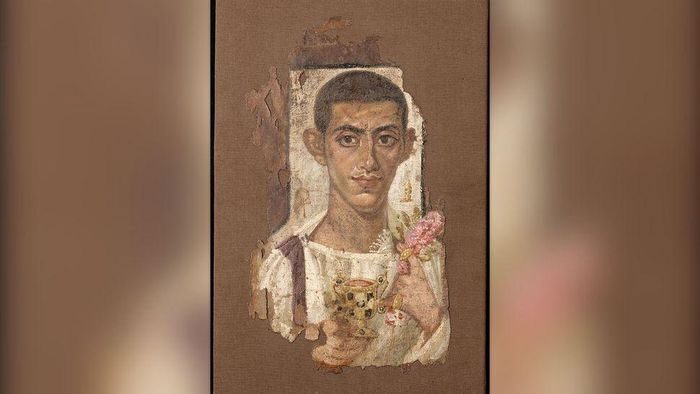
Photo: Museé du Louvre, Dist. RMN-Grand Palais / Georges Poncet)
The “Portrait of Amonius” was restored and shows that it was painted on linen around the mid-3rd century AD. The image features a young man holding a cup in one hand and a bouquet of flowers in the other. According to the book “Mummy Portraits in the J. Paul Getty Museum” (Oxford University Press, 1982), the artist gave Amonius several distinctive features, including large lips, prominent ears, sunken eyes, and oddly curved fingers.
2. Pearl Earrings
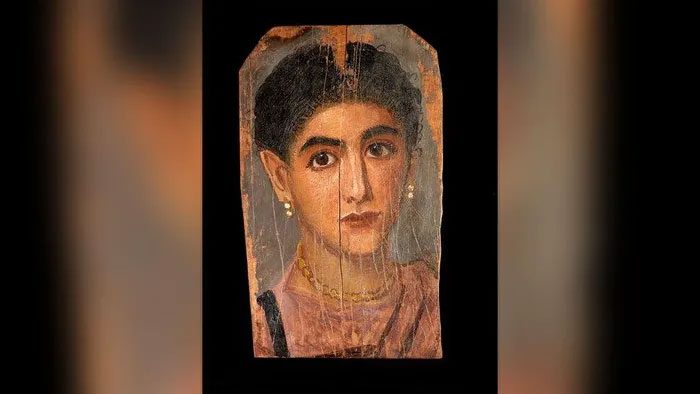
Photo: Museé du Louvre, Dist. RMN-Grand Palais / Georges Poncet)
This portrait was painted on wood between 150 and 200 AD. It depicts a young woman with doe-like brown eyes, a slender nose, and thick eyebrows. Van den Bercken noted that pearls, like those she wears, were among the “most popular earrings” in Fayum portraits. He pointed out that jewelry and hairstyles can help researchers date the portraits. For instance, women’s hairstyles could be “very elaborate” and often reflected fashion trends directly from Rome, “mainly from the queens,” he said.
However, the issue is how long it took for Roman fashion to reach Egypt. In some cases, “something trendy in Egypt might have been out of style in Rome,” Van den Bercken noted.
3. The Bearded Man
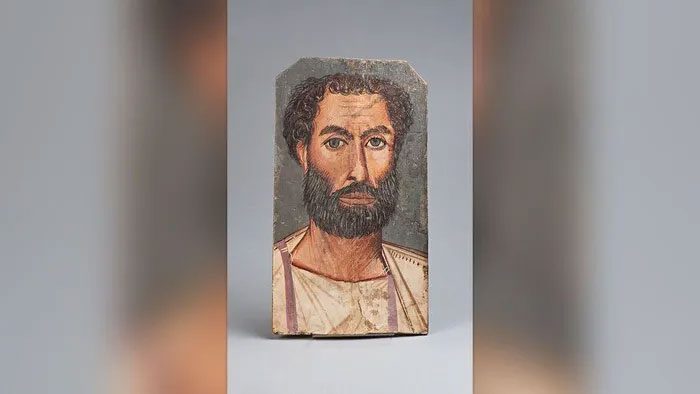
Photo: Rijksmuseum van Oudheden, Leiden
This portrait was painted on wood around the mid-2nd century AD. It features a bearded man with curly hair, dressed in white. The man’s beard may mimic the style of the Roman Emperor Marcus Aurelius (reigned 161 to 180).
4. Luxurious Jewelry
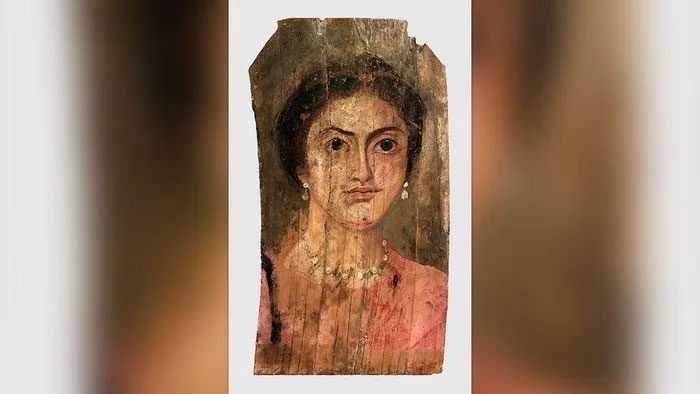
Photo: Allard Pierson, Amsterdam
This portrait was painted on wood around the mid-2nd century AD. It depicts a black-haired woman wearing a necklace and matching earrings. However, like other Fayum portraits, researchers are unclear whether it portrays the deceased as they looked in youth or around the time of their death.
In some cases, the portraits can be dated quite accurately, according to a 2020 study published in PLOS One. A team performed a CT scan of a Roman-era Egyptian boy’s mummy, digitally recreated the boy’s face, and then compared the recreation with the portrait of the boy. The analysis showed that the portrait made the child appear 3 or 4 years younger but was still very distinctive.
5. Lively Eyes
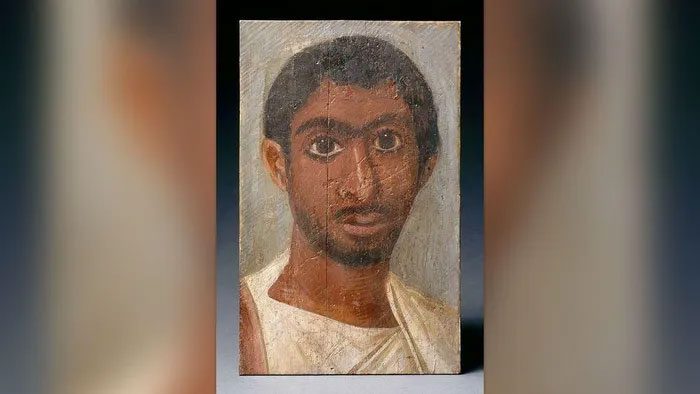
Photo: Paris, Museé du Louvre, Département des Antiquités égyptiennes
This male portrait was painted around 250 AD on lime wood, purchased by Henry Salt, the British consul in Egypt, in the early 1800s. The portrait became one of the earliest Fayum portraits discovered in modern times, according to “Mummy Portraits in Antiquity”. J. Paul Getty Museum.
The earliest record of a Fayum portrait collected dates back to 1615 when a group of paintings was brought from Saqqara, Egypt, to Europe by the Roman nobleman Pietro della Valle.
6. The Girl with the Golden Wreath
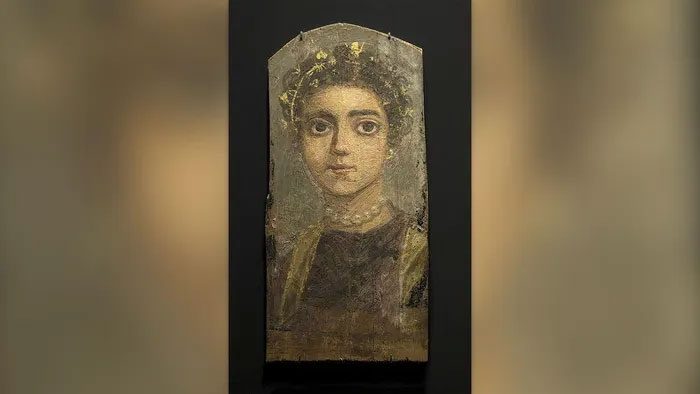
Photo: Reiss-Engelhorn-Museen, Mannheim
This portrait was painted on wood between 120 and 130 AD. It depicts a young girl wearing a pearl necklace and a golden wreath in her hair. Van den Bercken stated, “This wreath is a sign that she has ‘overcome’ death.”
7. The Man with the Golden Wreath
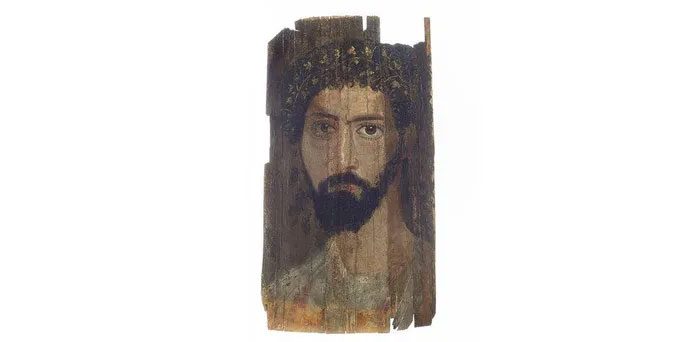
Photo: HCCH Egyptian Collection at Heidelberg University
Women were not the only ones depicted wearing golden wreaths. This portrait was painted on wood around the mid-2nd century AD. The image clearly shows a bearded man wearing his own golden wreath.
8. Realistic Portrait
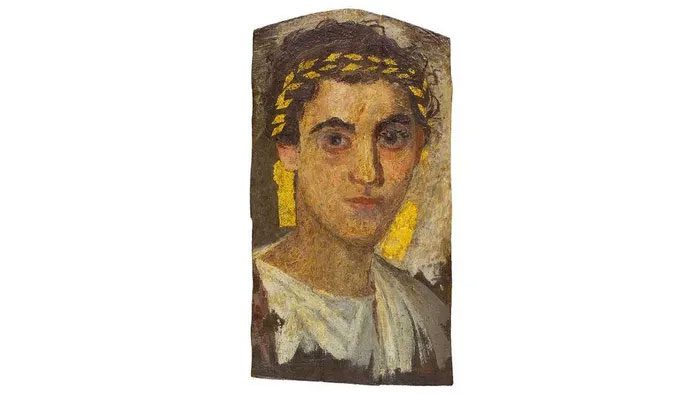
Photo: August Kestner Museum, Hannover
This portrait was painted around 150 AD, depicting a man in white clothing wearing a golden wreath. According to Allard Pierson, the striking images of Fayum portraits inspired artists to paint icons in the late Byzantine Empire, as well as artists in the late 19th and 20th centuries. Today, this style is considered one of the earliest known examples of realistic portrait painting.
9. The Curly-Haired Man
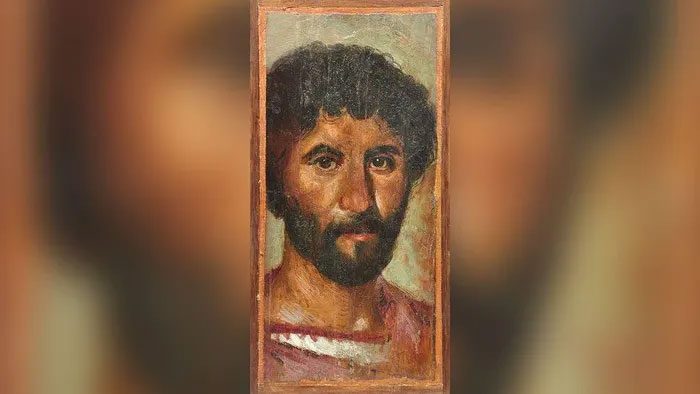
Photo: Allard Pierson Museum, Amsterdam
The man’s beard helped researchers date his portrait to the time of Emperor Marcus Aurelius. Like other portraits, the man depicted here may have European origins. Many Greeks and Romans lived in Egypt, initially during the Ptolemaic dynasty, which began when one of Alexander the Great’s generals took control of the region, and later when Rome turned Egypt into a province after the death of Cleopatra VII.
10. Eyes and Eyelashes
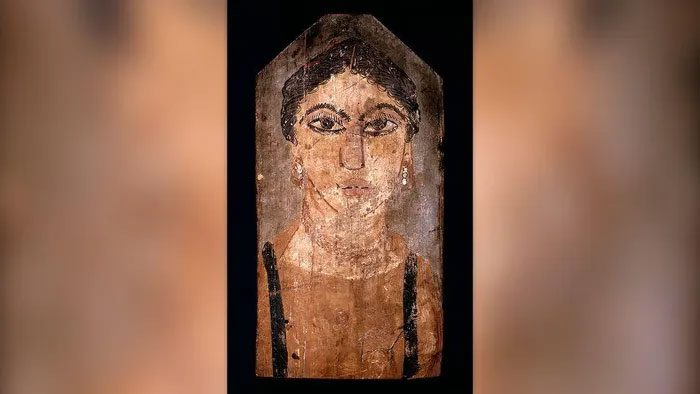
Photo: Allard Pierson, Amsterdam
This portrait was painted on wood around 300 to 400 AD, depicting a woman wearing pearl earrings. Van den Bercken stated, “Many details have been included in the composition, such as eyes and eyelashes. Some clues suggest that the deceased belonged to the middle or upper class, including the presence of individuals wearing elaborate jewelry in these portraits. Additionally, the individuals or families must have paid an artist to paint the portrait. Van den Bercken added, ‘Those who commissioned the portraits certainly had to have substantial financial resources to do so.’
11. Eye-Catching Necklace
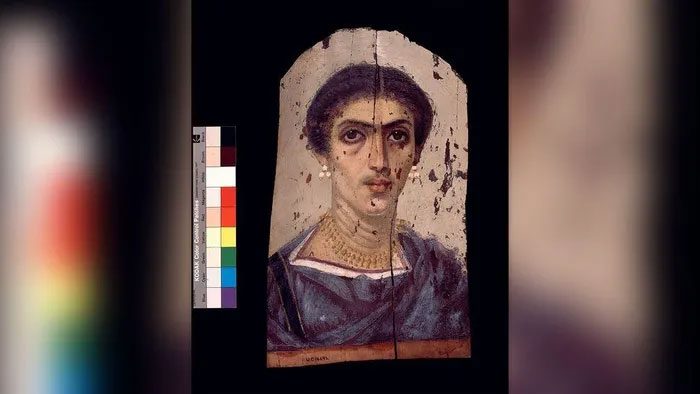
Photo: UCL Petrie Museum of Egyptian and Sudanese Archaeology, University College London
This portrait of a woman was painted between 160 and 190 AD. Most of the known Fayum portraits were discovered in the 1800s. However, in 2022, archaeologists announced that they had uncovered several more portraits at a cemetery in the ancient city of Philadelphia in Egypt.
12. The Woman with Bright Eyes
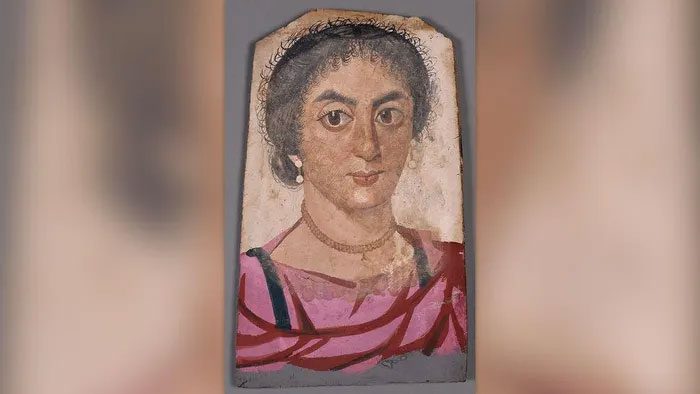
Photo: J. Paul Getty Museum, Villa Collection, Malibu, California
This portrait was painted on wood between 170 and 200 AD and was found in Egypt in the 1880s, according to “Mummy Portraits in the J. Paul Getty Museum.” The woman is adorned with pearl earrings, a necklace, a hot pink long dress, and a black clavi or decorative stripes. Her curly hair is styled in a bun.


















































